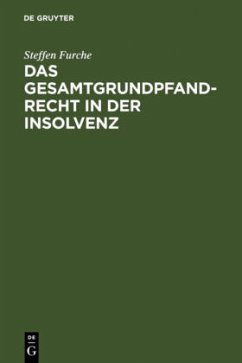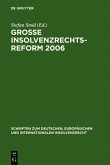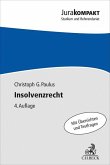How does a blanket mortgage work in the mortgagee's insolvency proceedings? This question led the author to the present investigation. The thesis moves between the laws regarding safeguarding of creditors and insolvency. After penetrating the doctrine behind its creation, the blanket mortgage is woven into the instruments regulating insolvency law. The creation and defeasibility of the blanket mortgage is analyzed after investigating the structure and organization of this overarching right in rem by examining its counterpart in lien law. One of the piece's linchpins is the teleology of Sections 1132 and 1222 German Civil Code. This leads back to the basic Roman legal principle of the entirety of the pledge liability - indivisa pignoris causa -. By using this principle and the structural principles and guidelines of property law, conclusions necessary for the legal creation of a blanket mortgage are drawn and then entered into the system of restraint on alienation and acquisition pursuant to Sections 81, 91 German Insolvency Statute (Insolvenzordnung) as well as those for contesting insolvency pursuant to Sections 129 ff German Insolvency Statute.
Wie verhält sich das Gesamtgrundpfandrecht in der Insolvenz des Sicherungsgebers? Diese Frage hat den Verfasser zu der vorliegenden Untersuchung veranlasst. Die Dissertation bewegt sich im Kreditsicherungs- und Insolvenzrecht. Das Gesamtgrundpfandrecht wird, nachdem seine Entstehungsdogmatik ergründet wird, in das insolvenzrechtliche Regelungsinstrumentarium eingefügt. Entstehung und Anfechtbarkeit des Gesamtgrundpfandrechtes werden analysiert, nachdem die Struktur und der Organismus dieses dinglichen Gesamtrechtes unter einbeziehender Betrachtung des Pendants im Bereich des Pfandrechtes untersucht werden.
Eines der Kernstücke der Arbeit ist die Teleologie von § 1132 BGB und § 1222 BGB. Diese führt zurück auf den römisch-rechtlichen Grundsatz der Ungeteiltheit der Pfandhaftung - indivisa pignoris causa -. Mit Hilfe dieses Grundsatzes und der Strukturprinzipien und Grundsätze des Sachenrechtes werden die für die Rechtsentstehung eines Gesamtpfandrechtes erforderlichen Schlussfolgerungen gezogen und diese in das System von Verfügungs- und Erwerbsverbot nach §§ 81, 91 InsO sowie dasjenige der Insolvenzanfechtung nach §§ 129 ff. InsO eingereiht.
Wie verhält sich das Gesamtgrundpfandrecht in der Insolvenz des Sicherungsgebers? Diese Frage hat den Verfasser zu der vorliegenden Untersuchung veranlasst. Die Dissertation bewegt sich im Kreditsicherungs- und Insolvenzrecht. Das Gesamtgrundpfandrecht wird, nachdem seine Entstehungsdogmatik ergründet wird, in das insolvenzrechtliche Regelungsinstrumentarium eingefügt. Entstehung und Anfechtbarkeit des Gesamtgrundpfandrechtes werden analysiert, nachdem die Struktur und der Organismus dieses dinglichen Gesamtrechtes unter einbeziehender Betrachtung des Pendants im Bereich des Pfandrechtes untersucht werden.
Eines der Kernstücke der Arbeit ist die Teleologie von § 1132 BGB und § 1222 BGB. Diese führt zurück auf den römisch-rechtlichen Grundsatz der Ungeteiltheit der Pfandhaftung - indivisa pignoris causa -. Mit Hilfe dieses Grundsatzes und der Strukturprinzipien und Grundsätze des Sachenrechtes werden die für die Rechtsentstehung eines Gesamtpfandrechtes erforderlichen Schlussfolgerungen gezogen und diese in das System von Verfügungs- und Erwerbsverbot nach §§ 81, 91 InsO sowie dasjenige der Insolvenzanfechtung nach §§ 129 ff. InsO eingereiht.








